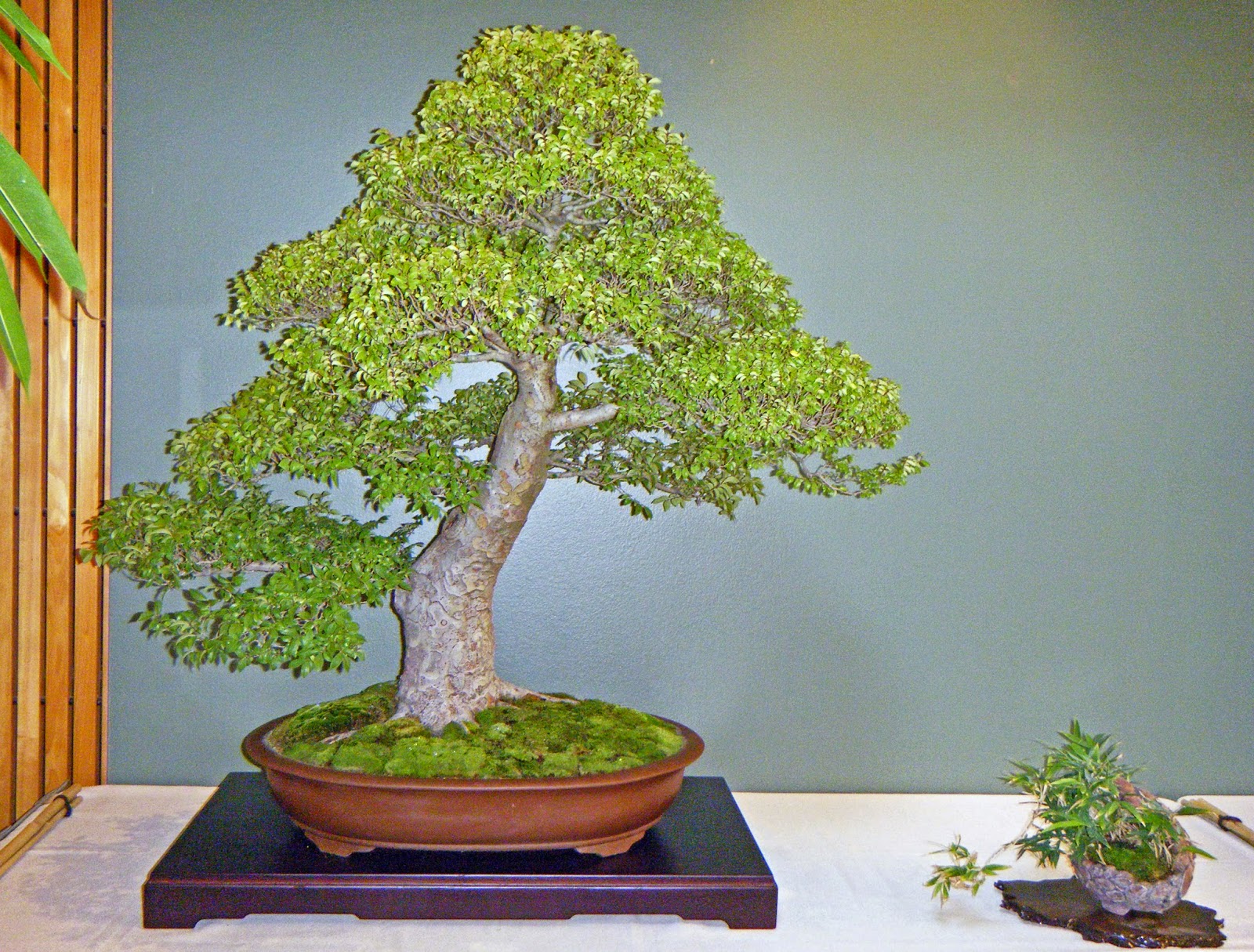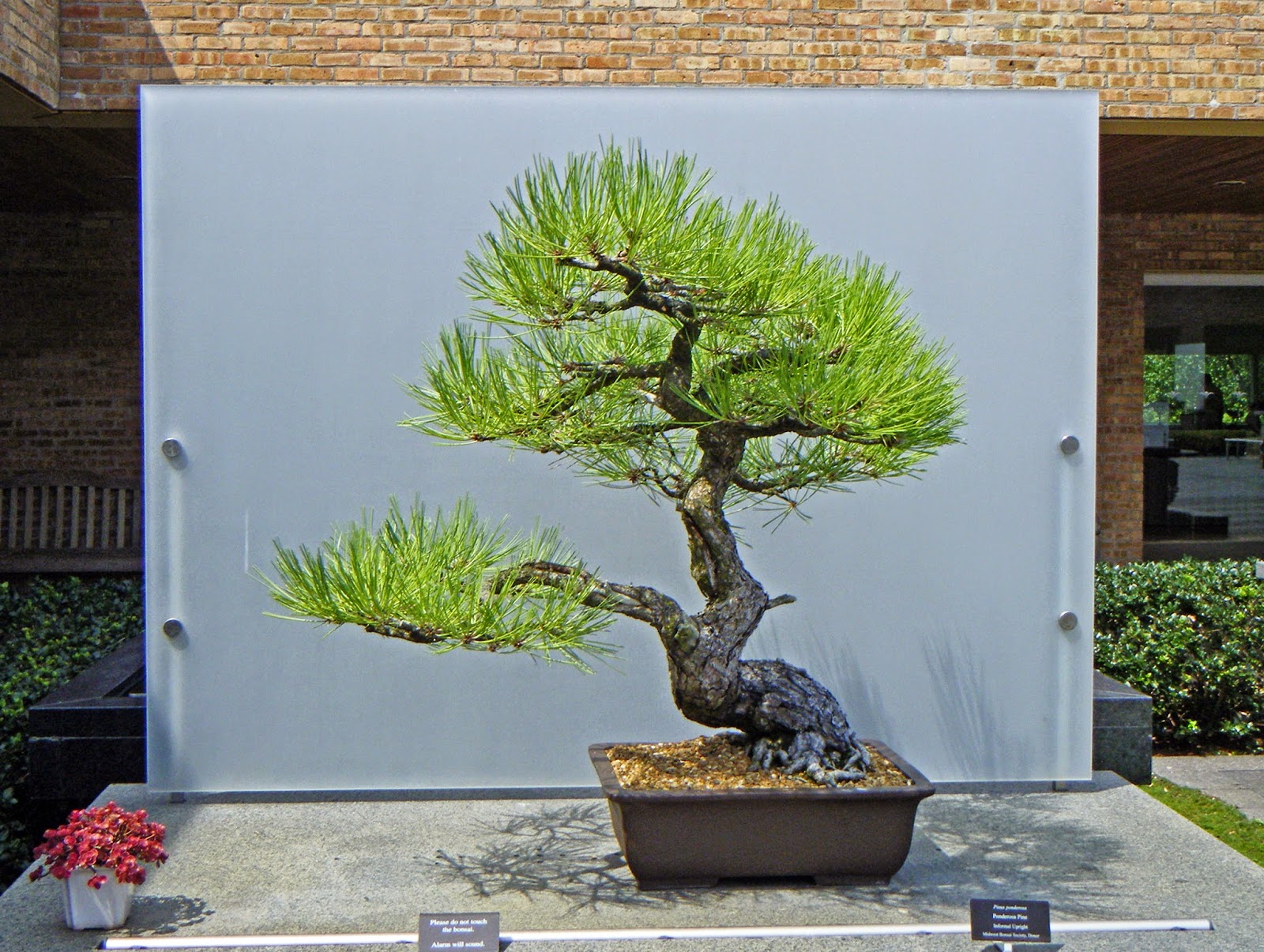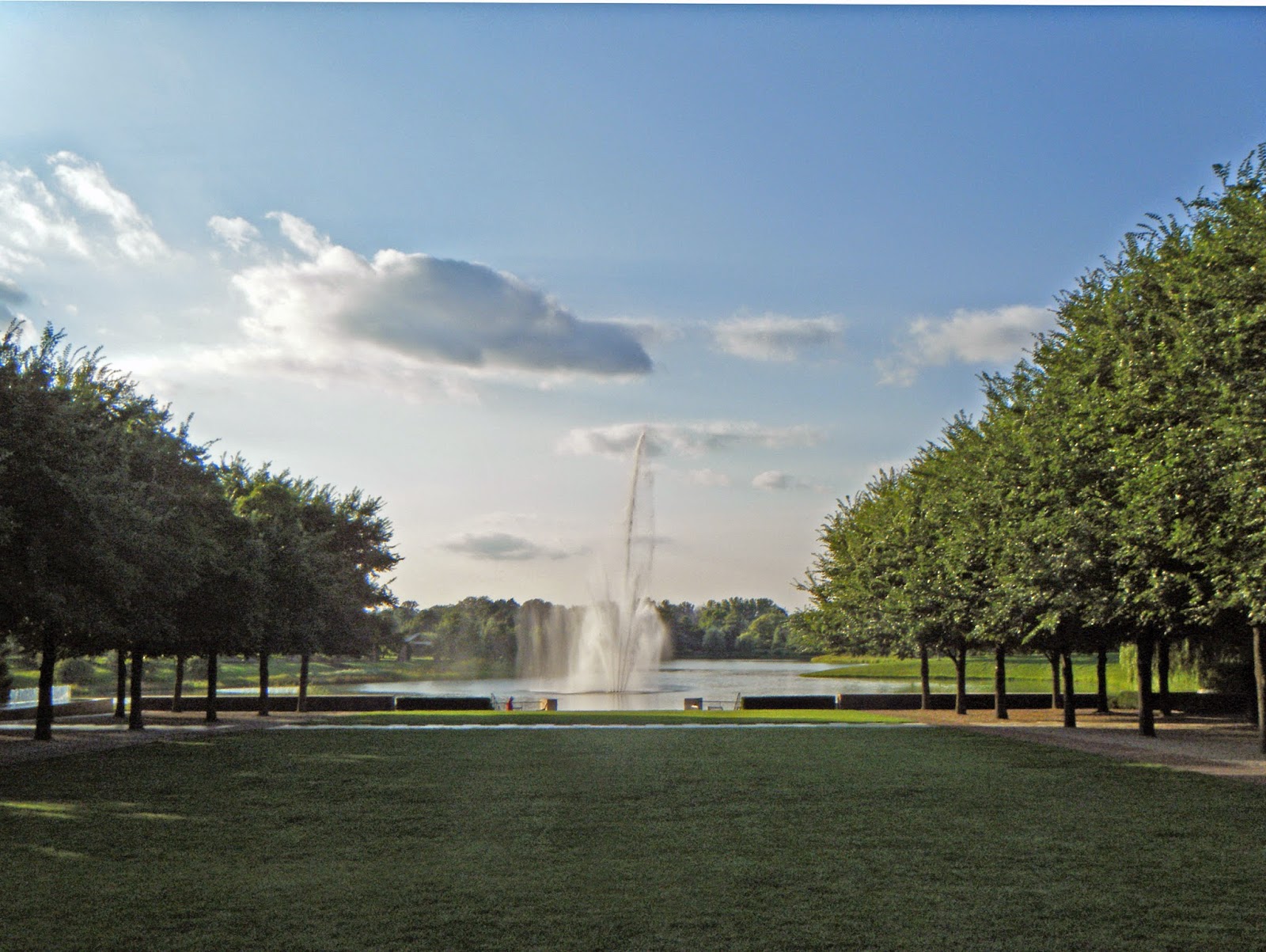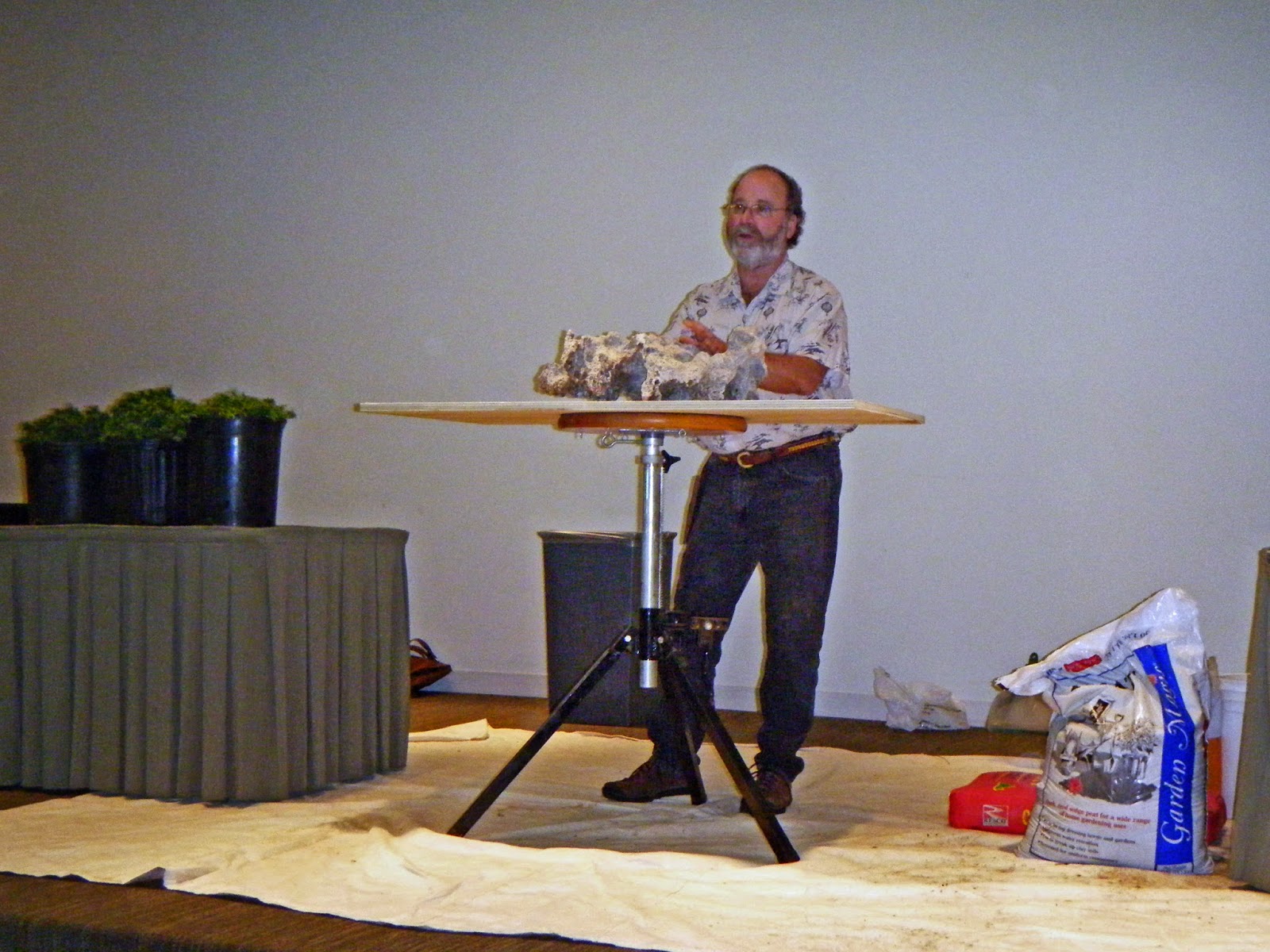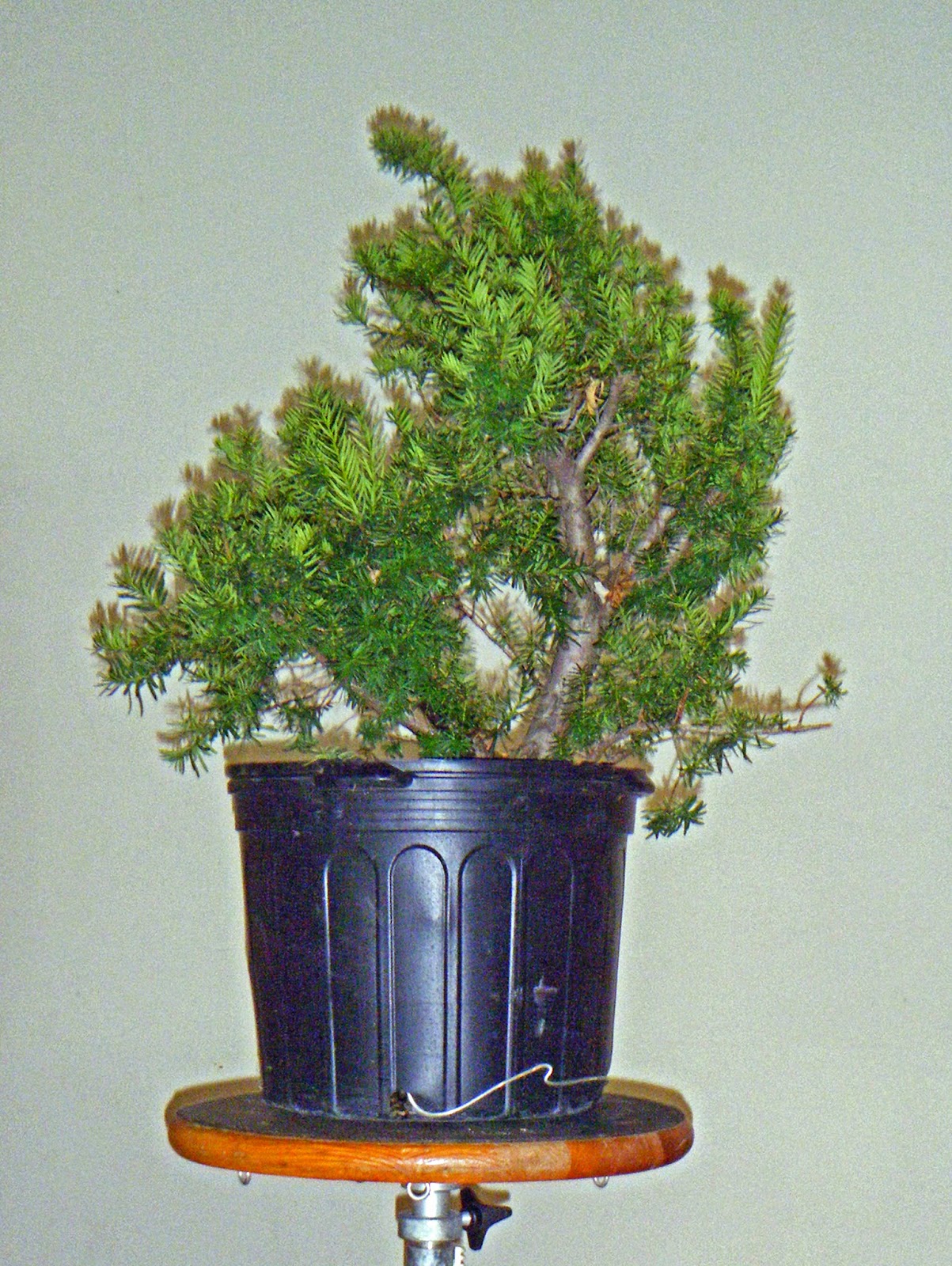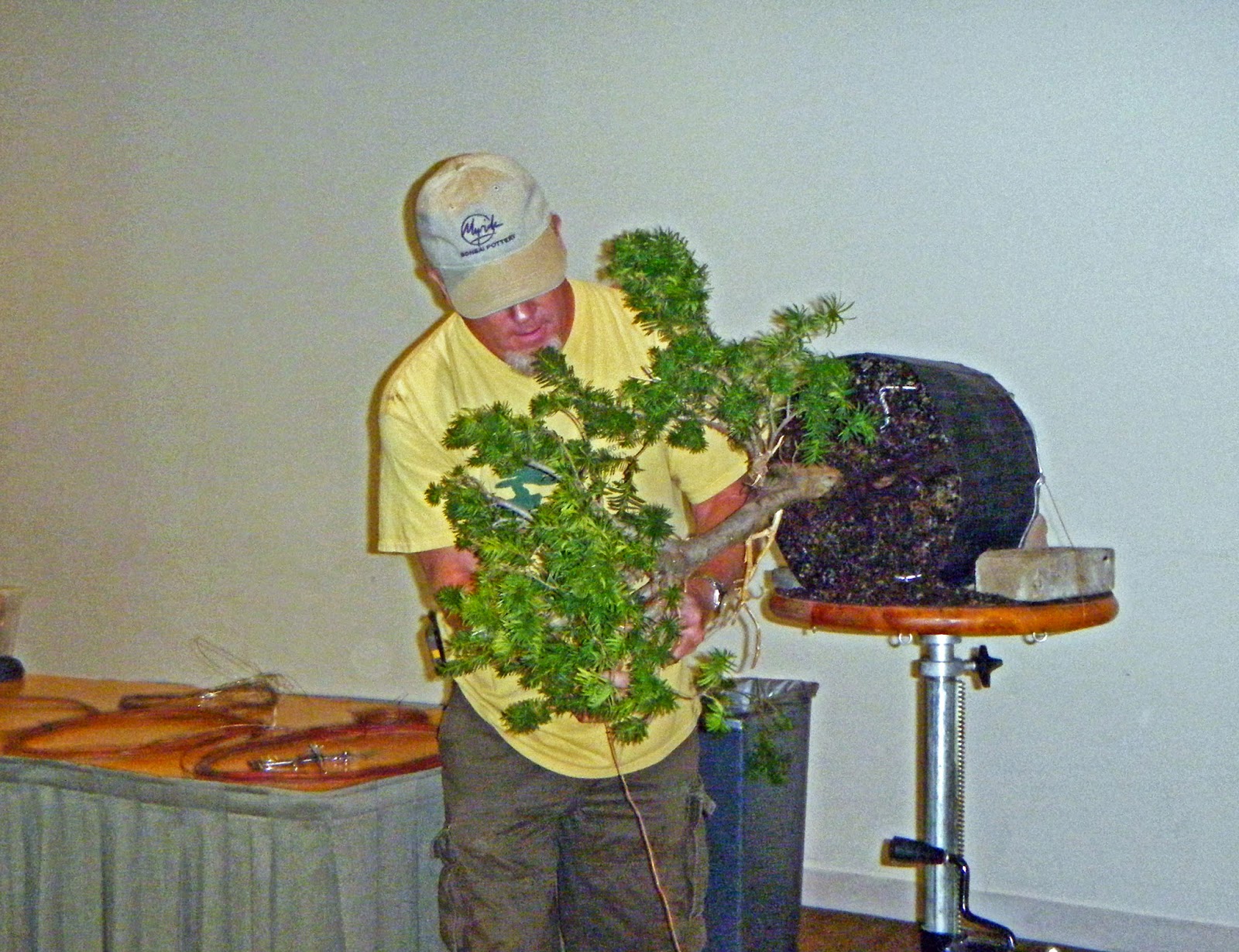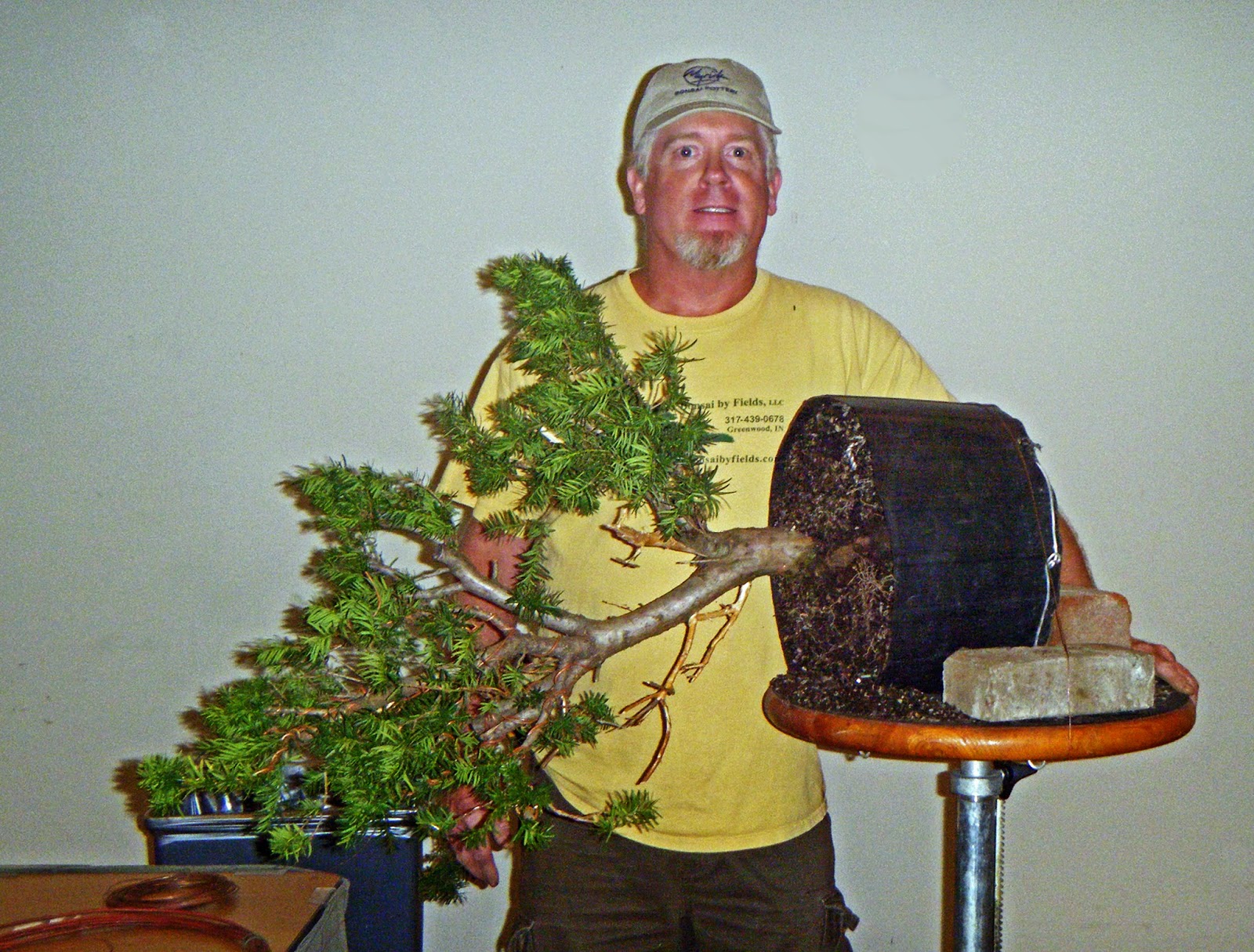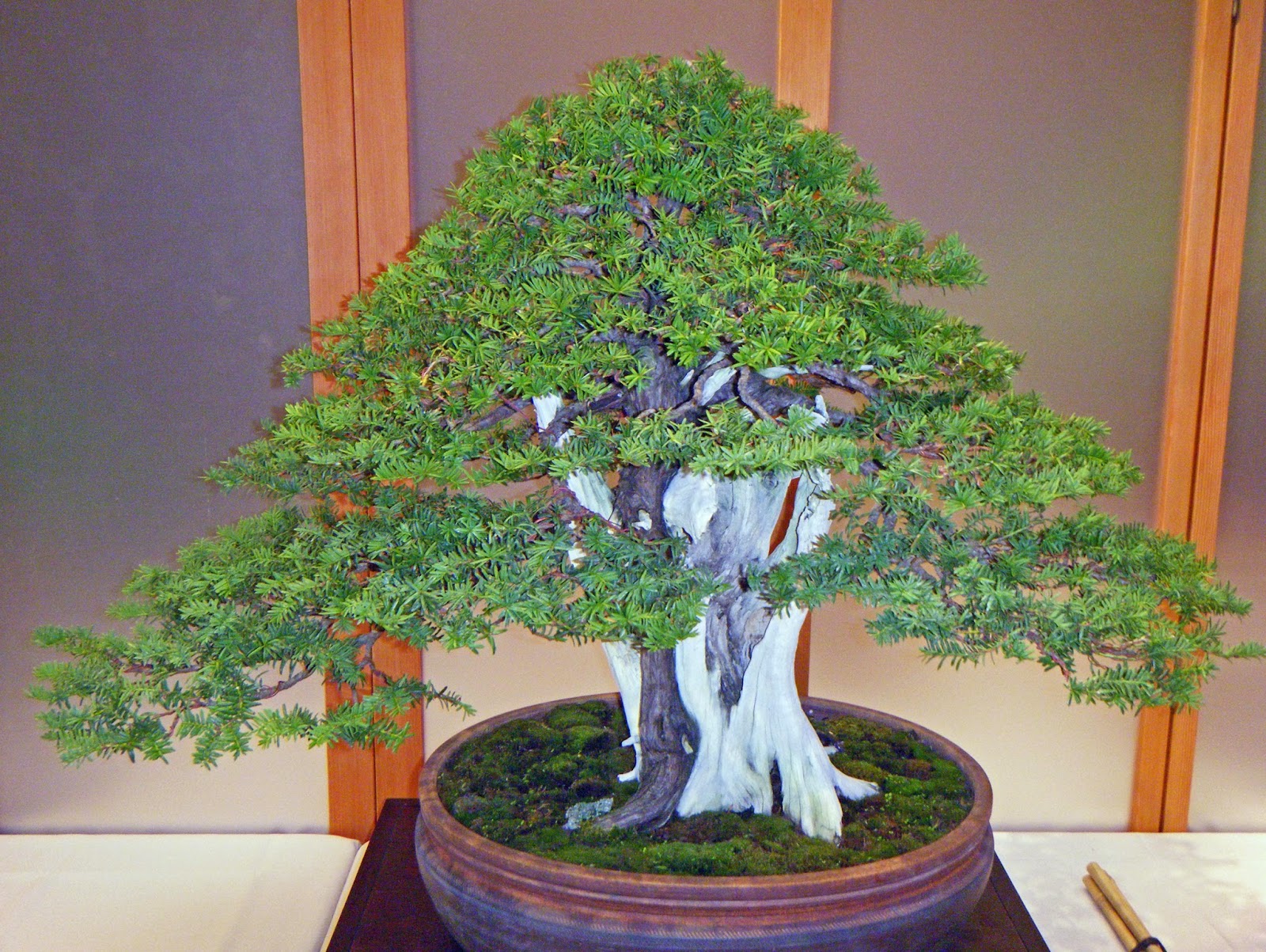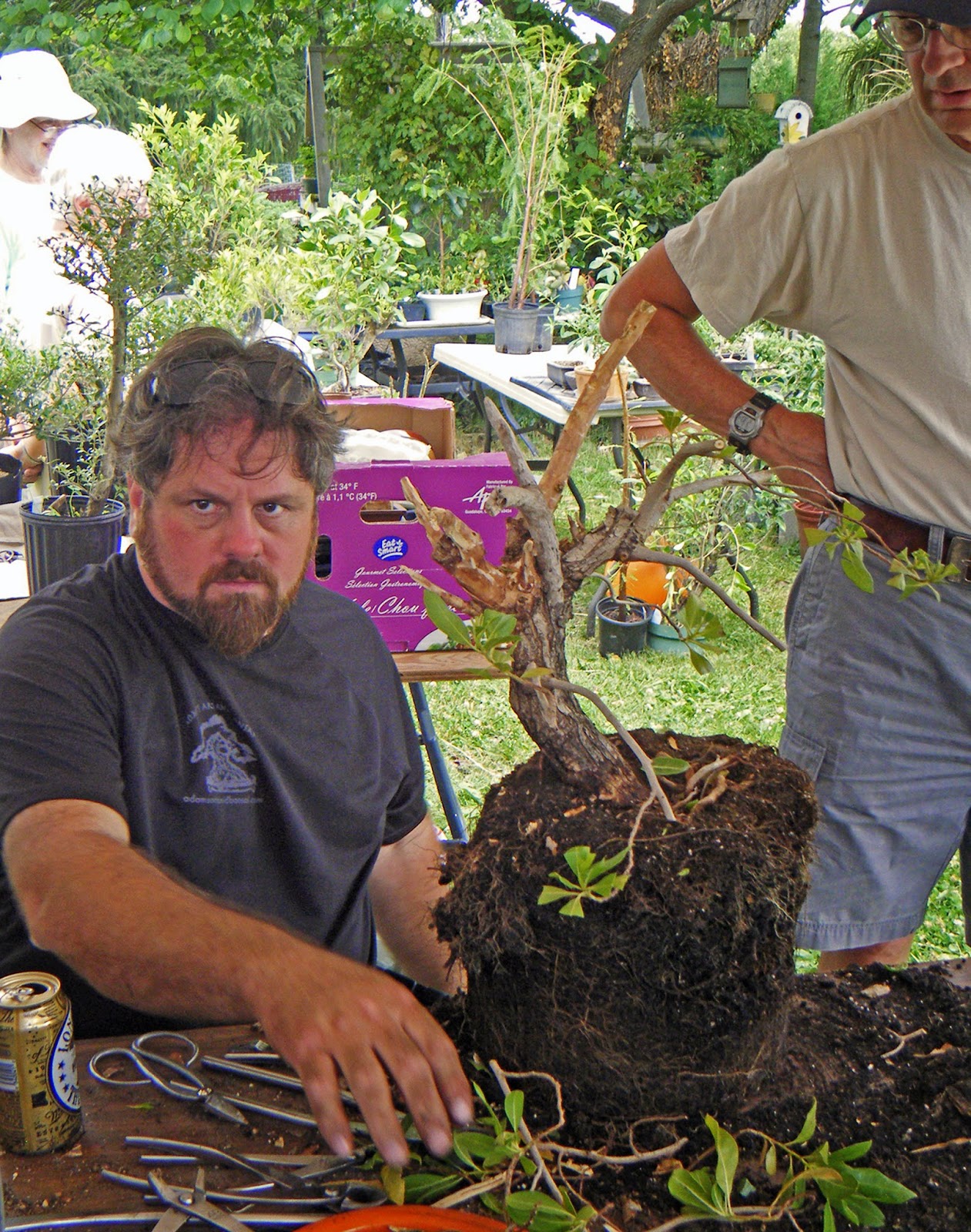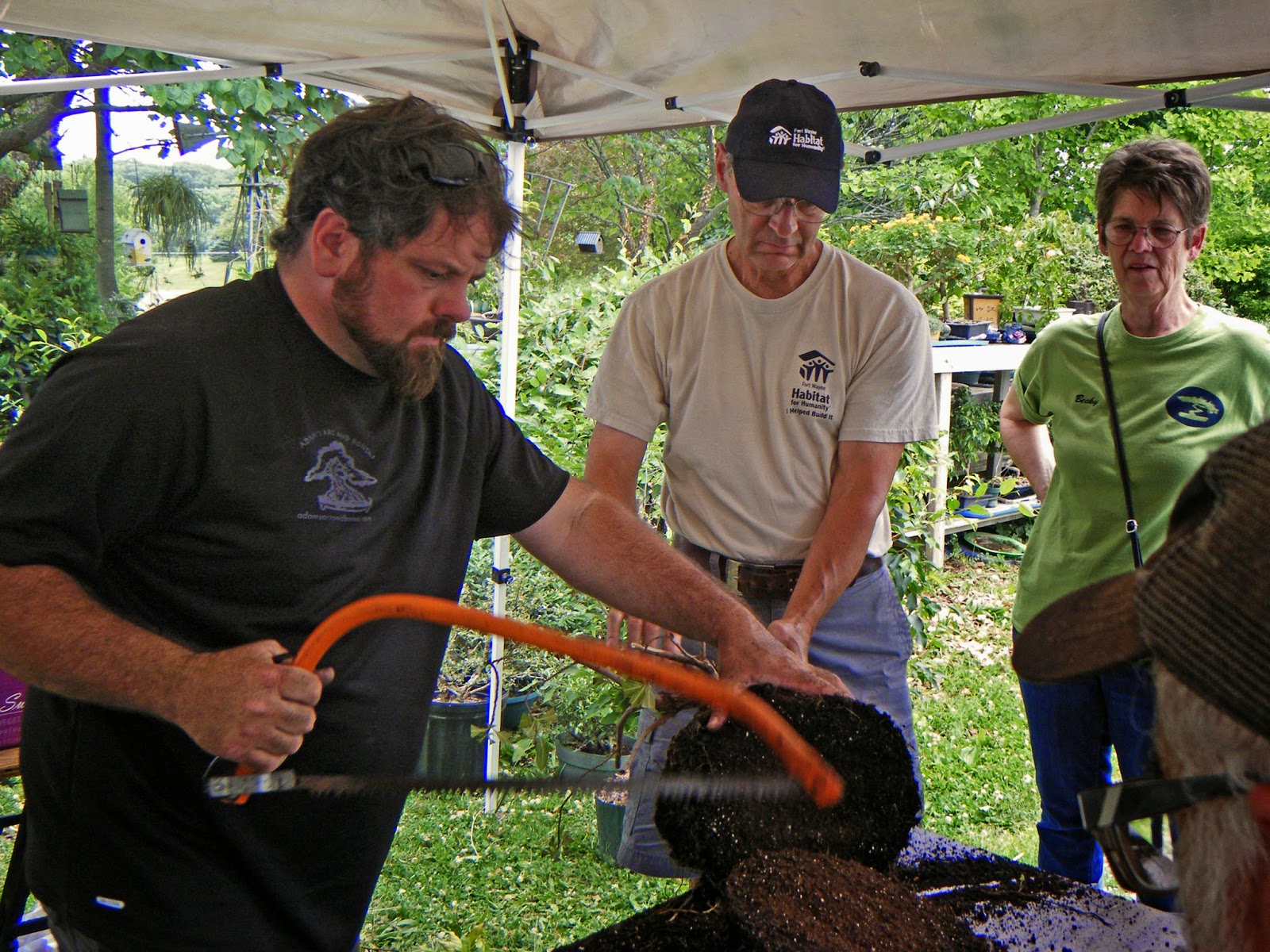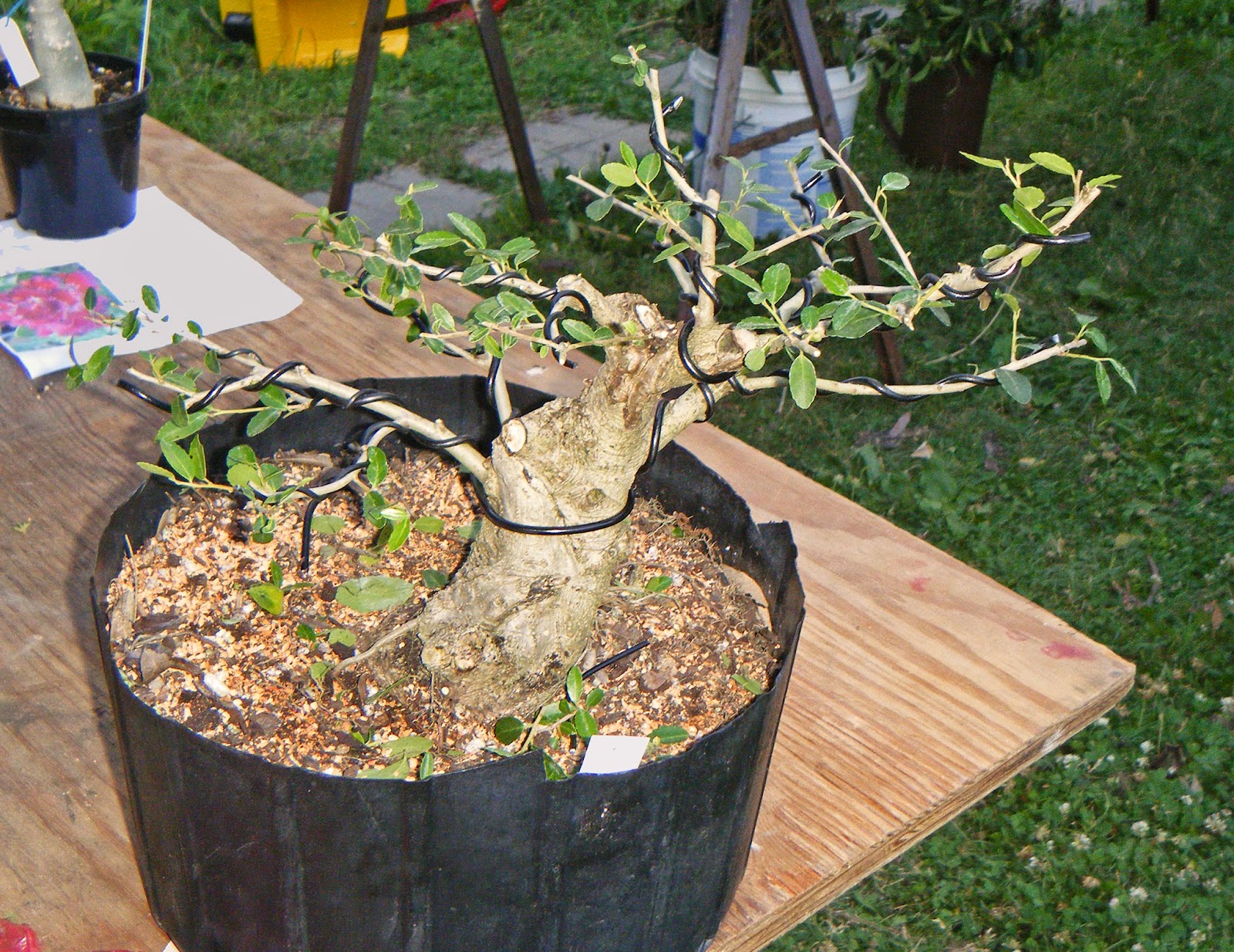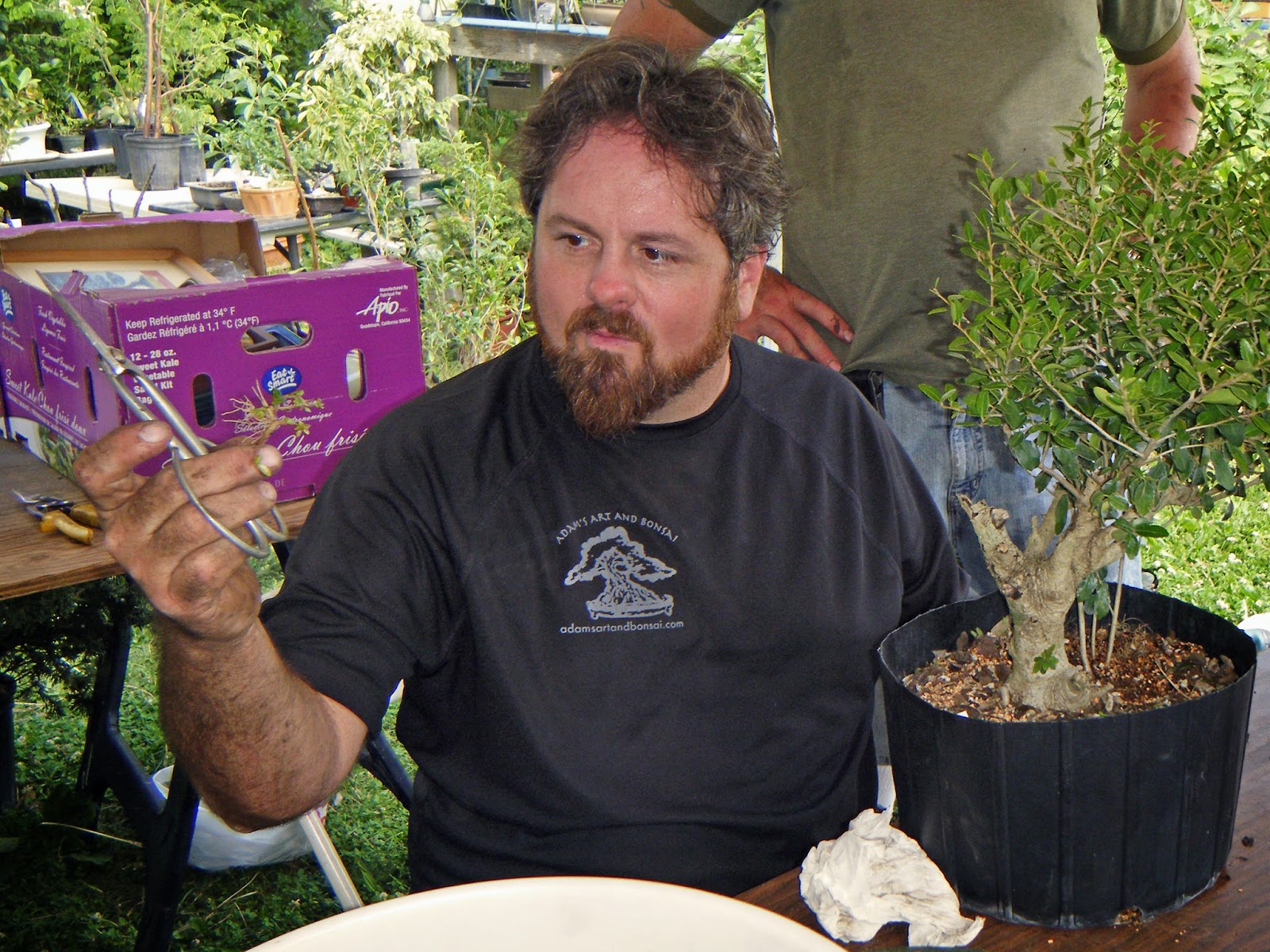Remember the yew that Mark Fields used in his demonstration at this year's Mid-America Bonsai Show in August? It's a Japanese yew, Taxus cuspidata, and Mark performed what is often called "creation styling:" the first big step in turning an unshaped plant into a bonsai. I wrote about it three posts back, in "The Year of the Yew."
Go ahead and click on the link to refresh your memory; it will help you appreciate what Mark has done with the tree since. (The link will open a new window; just close that window when you're done and you'll be right back here.)
Mark didn't have time to complete the creation styling (the staff had to get the auditorium ready for the next demonstrator,) but he still did enough that his audience could see clearly the broad strokes of his intended design. He finished after he got home, and last week he kindly sent me an updated picture of the tree. Here it is. I think you'll agree that Mark did an excellent job.
The pot to which the tree is wired is the one it will go into next spring. I presume the planting angle will be what we see in the picture. You can see where Mark cut off what is now the top of the plastic container, and the sphagnum he used to cover the newly-exposed roots there for the time being. You can also see the mesh he put over what was the top of the container to keep the soil in place.
For any readers who are new to bonsai, let me make a point. The work Mark did on this yew was quite extensive, and major pruning and wiring are to a plant as major surgery is to a human: in a word, traumatic. You'll notice in my "before" picture, in the "The Year of the Yew," that this tree was very healthy and well established. I'm sure Mark made sure of that before he decided to use it as his demonstration tree. And I'm just as sure that for the next several years he will focus on rebuilding the tree's strength and vigor, even as he starts on the process of refinement. My point: always be sure a tree is strong enough to handle a major operation before you start, and then be sure to give it enough time to recover afterward.
And I'm now looking forward even more to one day seeing this tree on display!
Go ahead and click on the link to refresh your memory; it will help you appreciate what Mark has done with the tree since. (The link will open a new window; just close that window when you're done and you'll be right back here.)
Mark didn't have time to complete the creation styling (the staff had to get the auditorium ready for the next demonstrator,) but he still did enough that his audience could see clearly the broad strokes of his intended design. He finished after he got home, and last week he kindly sent me an updated picture of the tree. Here it is. I think you'll agree that Mark did an excellent job.
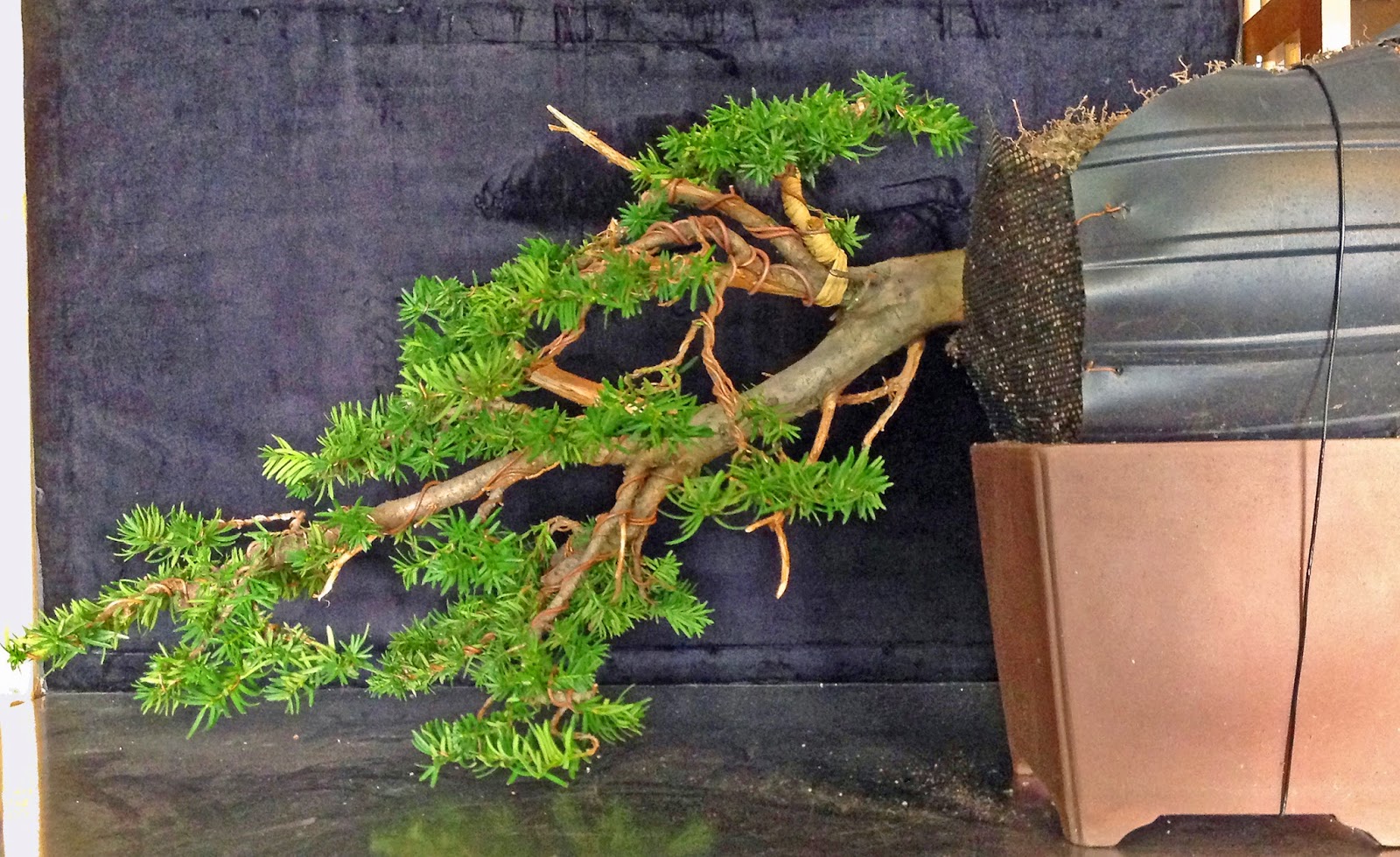 |
| Japanese yew, Taxus cuspidata. Owner and artist, Mark Fields. Photo by Mark Fields. |
For any readers who are new to bonsai, let me make a point. The work Mark did on this yew was quite extensive, and major pruning and wiring are to a plant as major surgery is to a human: in a word, traumatic. You'll notice in my "before" picture, in the "The Year of the Yew," that this tree was very healthy and well established. I'm sure Mark made sure of that before he decided to use it as his demonstration tree. And I'm just as sure that for the next several years he will focus on rebuilding the tree's strength and vigor, even as he starts on the process of refinement. My point: always be sure a tree is strong enough to handle a major operation before you start, and then be sure to give it enough time to recover afterward.
And I'm now looking forward even more to one day seeing this tree on display!
:-) :-) :-)






